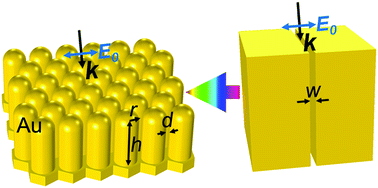Analytical plasmon dispersion in subwavelength closely spaced Au nanorod arrays from planar metal–insulator–metal waveguides
Abstract
Subwavelength closely spaced metallic nanorod arrays form attractive plasmonic structures. Describing their optical dispersion with an analytical model has been challenging to date, yet the collective resonances in the lattice can be finely tuned by changes in geometrical parameters and dielectric media, as reported by various publications. In this paper, we determine the plasmon dispersion relation in subwavelength closely spaced Au nanorod arrays for both hexagonal and square lattices. By 3D plasmon mapping using the finite element method (FEM), the orders of cavity modes in the lattice can be confirmed directly. Both the numerical and experimental results agree well with an analytical model for plasmon dispersion in planar metal–insulator–metal (MIM) waveguides of equivalent widths. This analytical model enables us to successfully predict the resonance wavelengths as well as the orders of cavity modes in the lattice. We attribute the physical origin of the equivalent width to a geometric effect, which can be qualitatively understood considering the Coulomb interactions between neighbouring nanorods. The work here is of significant benefit to both the optimized design of active plasmonic devices and the fundamental understanding of nano-optics.



 Please wait while we load your content...
Please wait while we load your content...